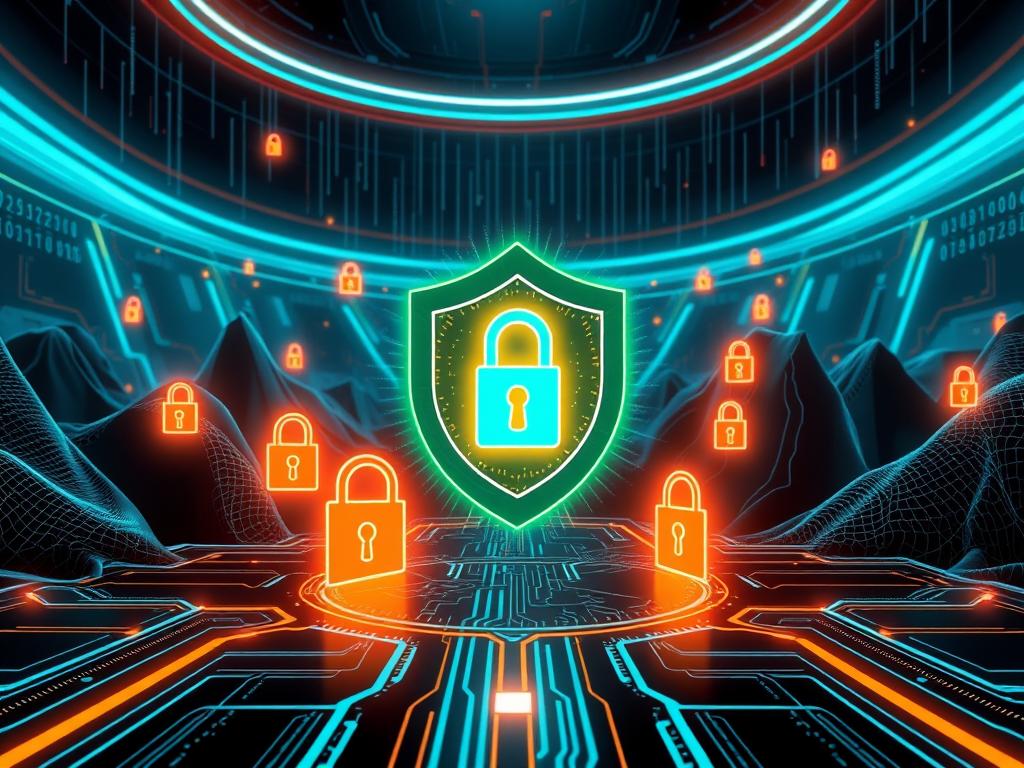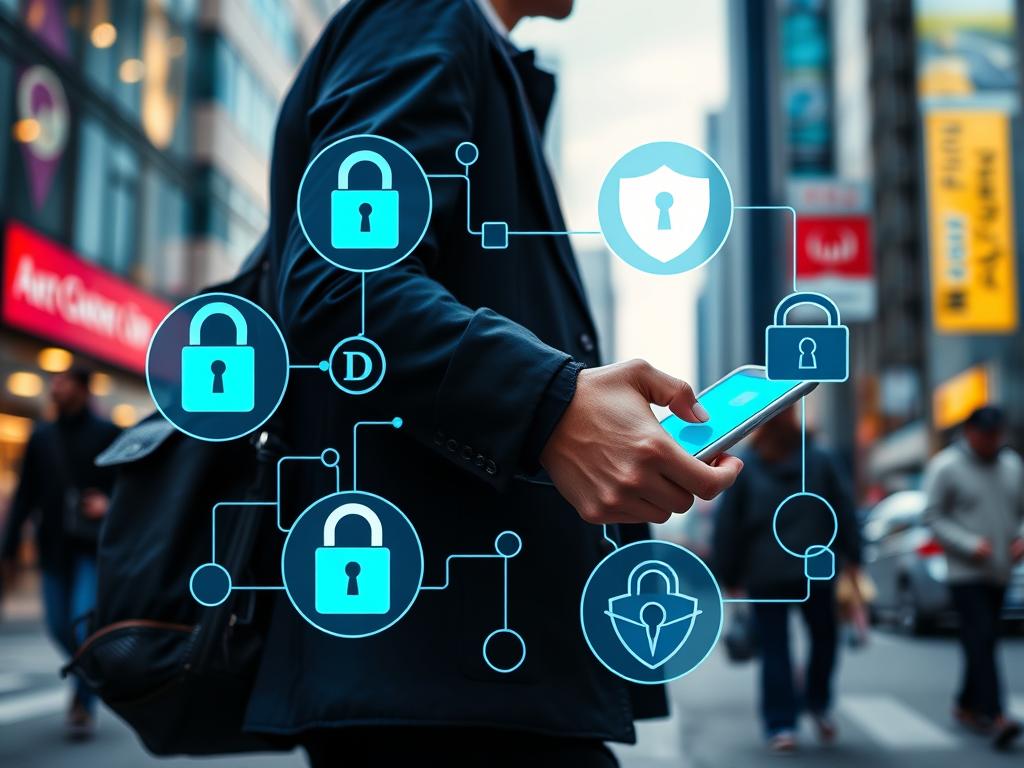Did you know that 68% of business leaders feel their cybersecurity risks are increasing every year? With the rapid evolution of cyber threats and sophisticated technologies like spyware and keyloggers at play, ensuring personal data protection is no longer optional; it’s essential. The rise of adware and cookies being exploited by threat actors to harvest sensitive information showcases just how vulnerable we are in a digitally connected world.
As cyberattacks become more prevalent and crafty, investing in the best cybersecurity technologies can safeguard your digital privacy and enhance your online security. From digital privacy software to invaluable online security tools, the right cybersecurity solutions can provide robust protection against unauthorized access and data breaches.
Key Takeaways
- The importance of effective cybersecurity is underscored by the increasing sophistication of cyber threats.
- Implementing technologies like antivirus software and firewalls can significantly enhance personal data protection.
- Maintaining updated operating systems and applications reduces vulnerabilities to cyber intrusions.
- Employing strong passwords and multi-factor authentication can prevent unauthorized account access.
- Caution is necessary when downloading software; always choose original sources to avoid malicious versions.
- Utilizing encryption technologies is crucial for safeguarding sensitive data during transmission and storage.
- Regularly reviewing and updating cybersecurity tools ensures you stay ahead of potential threats.
Understanding Cybersecurity: Why It Matters
The importance of cybersecurity cannot be overstated in today’s digital landscape. As the growing threat landscape becomes more complex, individuals and organizations alike face numerous challenges in protecting their sensitive information. Data breaches have become commonplace, resulting in severe consequences for those affected, including financial loss and reputational damage.
The Growing Threat Landscape
The rise of ransomware attacks is a stark reminder of the evolving threats to personal data protection. Statistics reveal a 13% increase in ransomware incidents over the past five years, with each attack costing companies an average of $1.85 million. Small and medium businesses are particularly vulnerable, with 13% experiencing an attack within the last year. Insider threats also pose significant risks, where employees or partners may inadvertently or maliciously compromise data security.
Importance of Personal Data Protection
Strengthening personal data protection is crucial for maintaining trust with customers and stakeholders. A robust cybersecurity strategy not only defends against data breaches but also limits the sensitive information that could be exposed during attacks. As organizations adapt to new technologies and challenges, investing in cybersecurity becomes a necessity. For more insights on why cybersecurity matters, explore this detailed guide.
Essential Cybersecurity Technologies to Consider
In today’s digital environment, understanding essential cybersecurity technologies is crucial for personal and organizational protection. Among these vital tools, firewalls and antivirus software stand out for their roles in creating a secure network and safeguarding personal data.
Firewalls: Your First Line of Defense
Firewalls act as a barrier between your trusted internal network and the untrusted external environment. They monitor and control incoming and outgoing traffic based on predefined security rules. Various types serve distinct purposes:
- Packet filter firewalls are the most basic and widely used by cybersecurity professionals to allow or block data packets based on headers.
- Connection tracking firewalls (second-generation) log active connections and are better at understanding the context of the data packets being transferred.
- Application firewalls, like layer 7 firewalls, can filter content based on applications, improving security against specific web threats.
Antivirus Software: A Necessary Shield
Antivirus software initializes active protection against malware, a significant aspect of cyber defense systems. This software is essential in scanning, preventing, and removing malicious software. Different methodologies enhance their effectiveness:
- Behavior-based detection utilizes machine learning algorithms to identify and react to new, previously unknown threats.
- Signature-based detection focuses on known malware types, making it effective against threats like adware and keyloggers.
- Next-gen antivirus software implement signature-less detection, using AI and behavioral analytics to identify threats without traditional signatures.
The combination of firewalls and antivirus software represents a foundational layer in online security tools, offering robust protection against a multitude of cyber threats. Professionals and individuals alike should continuously assess and update their cybersecurity approach through essential cybersecurity technologies to ensure safety in an evolving landscape.

Advanced Tools for Enhanced Security
As the digital landscape becomes increasingly complex, employing advanced cybersecurity tools is essential to safeguard personal data. These innovations play a crucial role in maintaining secure online privacy solutions and mitigating potential threats.
Encryption Technologies: Keeping Your Data Safe
Encryption technologies convert sensitive information into a secure format, ensuring that only authorized users can access the data. By encrypting emails, files, and communications, individuals can significantly reduce the risk of unauthorized access. This process is vital for protecting personal information and maintaining trust in digital transactions.
VPNs: Securing Your Internet Connection
VPNs, or Virtual Private Networks, provide a secure tunnel for internet traffic, safeguarding data transmissions from snooping. Whether accessing public Wi-Fi or private networks, VPNs ensure that sensitive information remains confidential. These tools not only enhance online privacy but also allow users to browse the internet without geographic restrictions.
Multi-Factor Authentication: An Extra Layer of Protection
Multi-factor authentication adds an extra layer of security by requiring multiple forms of verification before granting access to sensitive accounts. By combining something you know (like a password) with something you have (like a phone), individuals can protect their online resources from unauthorized access. This advanced cybersecurity tool is indispensable in the fight against identity theft and data breaches.
| Cybersecurity Tool | Function | Key Benefit |
|---|---|---|
| Encryption Technologies | Transforms data into a secure format | Protects sensitive information from unauthorized access |
| VPNs | Secures internet connections | Protects data transmissions on public networks |
| Multi-Factor Authentication | Requires multiple verification steps | Enhances account security against unauthorized access |
AI and Machine Learning in Cybersecurity
Artificial intelligence (AI) and machine learning are transforming the landscape of cybersecurity, offering innovative solutions to combat ever-evolving threats. These technologies not only enhance threat detection but also enable organizations to respond swiftly to potential incidents. With data breaches on the rise, incorporating AI in cybersecurity presents a critical advantage for protecting sensitive information.
How AI Detects Cyber Threats
AI leverages machine learning to analyze large amounts of data in real-time, identifying patterns and anomalies essential for effective threat detection. By quickly pinpointing unusual behaviors, AI systems enhance security measures across networks, ensuring proactive responses to potential breaches. Automated tasks, such as patch management and network traffic monitoring, significantly reduce labor costs while improving the efficacy of cybersecurity protocols.
Predictive Analytics: Staying One Step Ahead
Predictive analytics, a component of AI in cybersecurity, empowers organizations to anticipate and mitigate potential threats before they materialize. By analyzing historical data, AI systems can identify vulnerabilities and implement advanced data security measures to counteract possible exploits. This proactive approach, combined with AI’s ability to adapt to evolving threats, strengthens overall network security, allowing companies to manage risks effectively and maintain a robust defense against cybercriminals.

Cloud Security Solutions for Personal Data
In today’s fast-paced digital landscape, leveraging cloud security solutions has become essential for safeguarding personal data. Organizations increasingly rely on cloud computing for storing sensitive information while seeking effective cybersecurity tools to enhance their data protection strategies. Various cloud providers present their own unique offerings, which can either mitigate security risks or expose vulnerabilities.
Benefits of Cloud Security Technologies
Investing in cloud security technology delivers several advantages:
- Scalability: As businesses grow, cloud security solutions can easily adapt to changing storage needs without compromising data protection.
- Cost-effectiveness: Many cloud providers offer competitive pricing, allowing organizations to access advanced data protection technologies without excessive investment.
- Enhanced Data Privacy: By implementing robust security measures, companies can protect sensitive data and ensure compliance with regulations.
- Multi-cloud Management: Organizations often utilize multiple cloud environments which necessitate effective management of their security policies.
- Real-time Threat Detection: Advanced tools such as Cloud Detection and Response (CDR) facilitate immediate reaction to potential threats, minimizing potential damage.
Top Cloud Security Providers
The market features several notable cloud providers recognized for their exceptional cloud security offerings. Great options include:
| Provider | Key Features | Best Suited For |
|---|---|---|
| AWS (Amazon Web Services) | Comprehensive compliance tools, strong identity management | Large enterprises with diverse needs |
| Microsoft Azure | Integrated security management, threat detection services | Businesses using Microsoft applications |
| Google Cloud | Advanced data encryption, user-friendly interface | Startups and tech companies |
| IBM Cloud | AIOps for security, customizable security tools | Companies valuing AI-driven insights |
| Oracle Cloud | Robust compliance features, strong data protection technology | Organizations in data-sensitive industries |
Mobile Security Tools for On-the-Go Protection
As mobile devices become essential for both personal and professional tasks, the need for effective mobile security tools grows significantly. With over 66% of employees using smartphones for work, these tools play a crucial role in safeguarding sensitive data. Mobile antivirus applications and safe browsing VPNs are key components of a comprehensive security strategy, ensuring that users remain protected against evolving threats.
Mobile Antivirus Applications
Mobile antivirus applications, such as SentinelOne Singularity Mobile, are vital for defending against malware and various cyber threats. This solution has been recognized as one of the top mobile security software options by Gartner Peer Insights. Companies have praised SentinelOne for its low resource usage and effective threat detection capabilities. Features like unsecured connection detection and network security help to optimize mobile performance while protecting user data. A privacy-first approach ensures that threat hunting continues even when devices are offline, which is essential for maintaining security during travel or on-the-go.
Safe Browsing VPNs for Mobile Devices
Employing safe browsing VPNs can significantly improve mobile security, particularly when accessing public Wi-Fi networks. These digital privacy software solutions create secure connections, protecting users from potential eavesdroppers and data theft. With alarming statistics indicating that 70% of online fraud occurs through mobile platforms, employing a VPN becomes crucial for secure browsing experiences. Using tools like Norton 360 With LifeLock or PreVeil can further enhance security, offering features such as identity protection and email encryption.
For more insights on essential travel items that can support your mobile security journey, visit this helpful guide.

The Role of Cybersecurity Awareness
In today’s digital landscape, cybersecurity awareness plays a crucial role in protecting organizations from an array of cyber threats. Establishing a proactive workforce through comprehensive employee training programs significantly enhances organizational security by equipping staff with essential knowledge and skills. This type of training educates employees not only about potential risks but also the best practices for effective data protection.
Employee Training Programs for Data Protection
Effective employee training programs encompass various modules, including recognizing phishing attempts, understanding the importance of strong passwords, and promoting safe internet browsing habits. As approximately 50% of data breach incidents involve phishing and social engineering, it is vital for employees to identify these threats promptly. A well-structured training program can empower staff to serve as the first line of defense against cyber attacks.
Learning from Past Cyber Attacks
Analyzing lessons from cyber attacks reveals valuable insights that organizations can use to strengthen their defenses. For instance, data shows that 70% of breaches in 2023 involved the human element, highlighting the need for continuous education and awareness. By understanding the common tactics used by cybercriminals, organizations can adjust their training protocols and refine their security measures to mitigate vulnerabilities.
On a consumer level, awareness is equally important. Nearly 70% of consumers believe that businesses are lacking in cybersecurity, leading to hesitance in engaging with those that lack transparency regarding their protective measures. Initiatives like Cybersecurity Awareness Month reinforce the need for an informed public and remind organizations of their responsibility in safeguarding sensitive information.
| Statistic | Value |
|---|---|
| Estimated global cost of cybercrime by 2025 | $10.5 trillion |
| Annual increase in global cybercrime costs | 15% |
| Percentage of organizations facing breaches due to remote workers | 20% |
| Percentage of data breaches linked to human errors | 70% |
| Average cost of a data breach in 2022 | $4.35 million |
Investing in cybersecurity awareness and training can make a substantial difference in reducing incident rates and protecting organizational assets.
Choosing the Right Cybersecurity Solutions for You
Finding the right cybersecurity solutions requires a careful personal needs assessment to understand what is necessary to protect sensitive information effectively. Different individuals and organizations have unique security requirements based on their operations, structures, and the types of data they handle. By evaluating potential threats and understanding specific vulnerabilities, you can identify the level of security needed, thus optimizing your investment in cybersecurity solutions.
Assessing Your Personal Needs
When selecting solutions, start by conducting a thorough analysis of your security environment. Consider the types of data at risk and the specific regulatory requirements that apply to your situation. Utilizing resources like guides on choosing cybersecurity solutions can help in determining the most effective approach. Remember that a tailored strategy not only minimizes risks but also aligns with your overall business goals.
Budgeting for Security Solutions
Effective budgeting for security solutions can help ensure through financial planning that you acquire the tools necessary without overspending. The pricing for cybersecurity tools can vary widely, ranging from $8/user/month to $314/month for small teams. It is essential to weigh the costs against features such as usability, customer support, and standout functionalities to ensure you receive good value for your investment while also addressing security needs.
Reviewing and Updating Your Cybersecurity Tools
Finally, regularly reviewing and updating your cybersecurity tools is critical in adapting to the evolving threat landscape. New vulnerabilities emerge continually, making it essential to stay ahead of potential issues. Integrating solutions that allow for behavioral analytics and automated updates can enhance your ability to respond to threats. Continuous evaluation will ensure that your approach to cybersecurity remains robust and effective, thus safeguarding your personal data.











